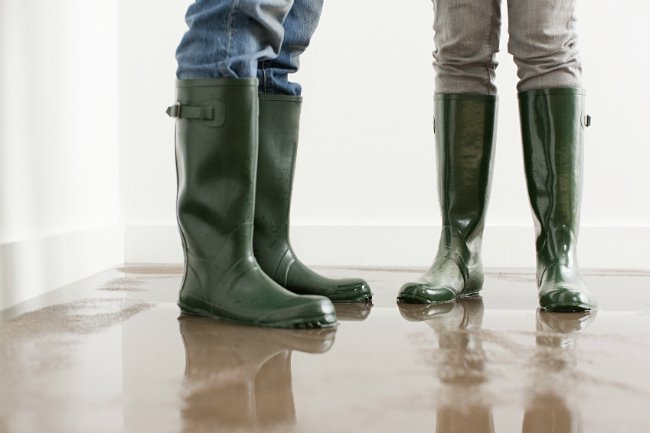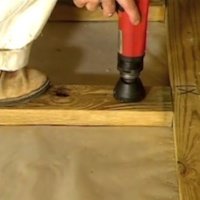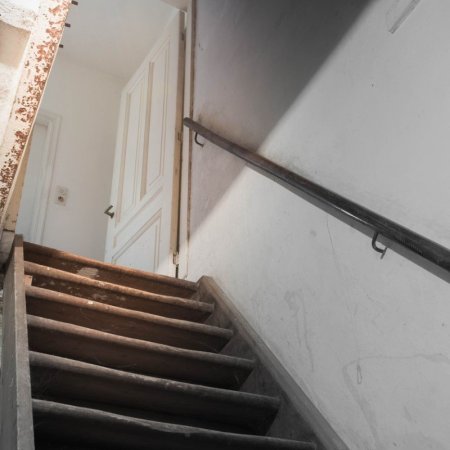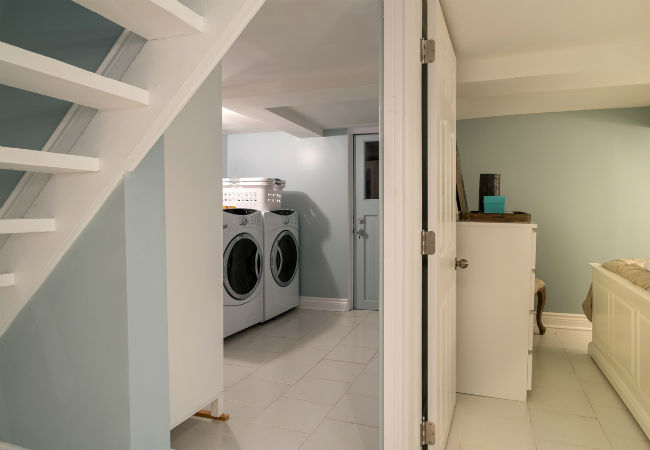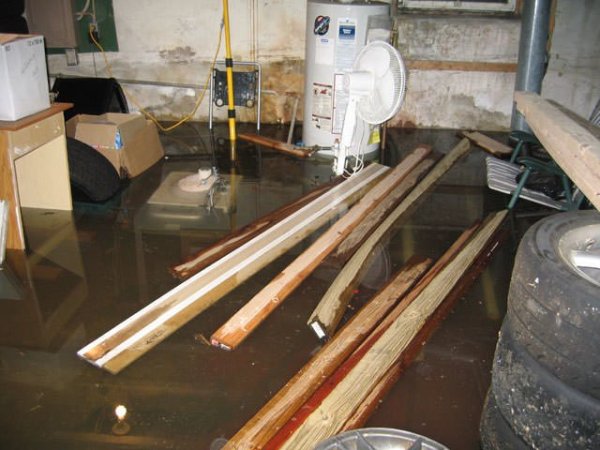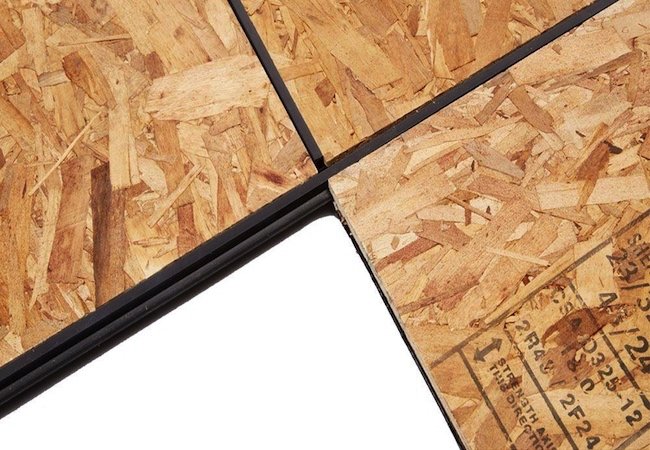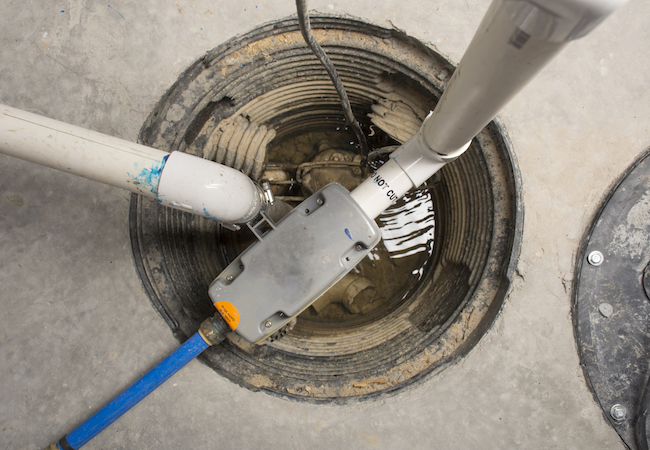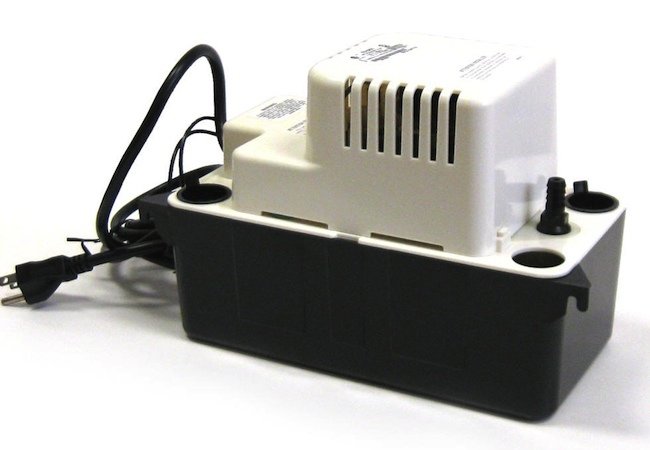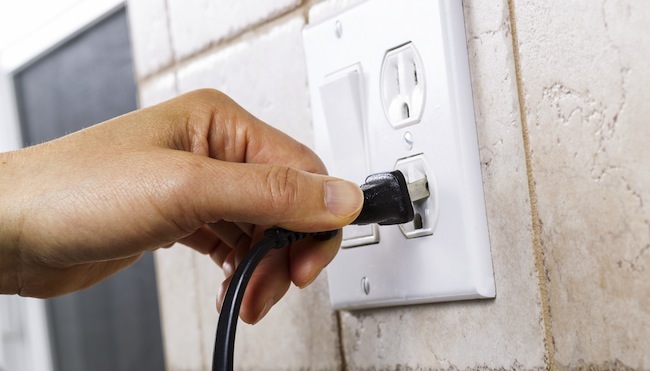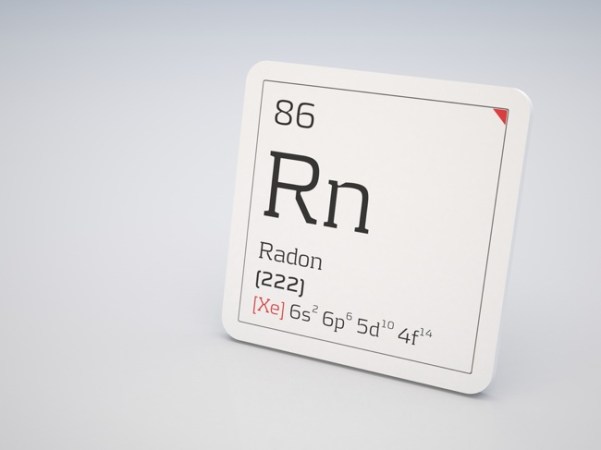We may earn revenue from the products available on this page and participate in affiliate programs. Learn More ›
Q. Help! I went to the basement to do some laundry but found water on the floor instead! How do I rescue my flooded basement?
A. Few household issues are as scary as serious flooding, but a little quick thinking now can save you a lot of money on repairs later. Water accumulates in the basement for all kinds of reasons, including burst pipes, sewage backups, nearby tree removals, and inadequate drainage. The most common culprit is rising groundwater from heavy rainfall or melting snow. Once enough water pools around your foundation, the moisture seeps inside and travels to the lowest ground—in this case, your basement. Whatever the root of your problem, we’ll show you how to dry out your basement—step by step.
Safety first. You might be panicking about your belongings, but safety should always be your first priority. Because water conducts electricity, entering a flooded basement can be deadly. For water more than a foot deep, the risk of electrocution is much higher, and you’ll need to hire a professional who specializes in flood remediation. If you’re only dealing with one or two inches of water, you can probably clear out most of the flooding on your own. Still, it’s a good idea to ask someone to stay nearby so they can intervene if things go awry. From raw sewage to chemicals and pollutants, all kinds of hazardous materials can be present in flood water. Don’t go downstairs without protective clothing, goggles, and gloves. Don’t forget to pull on a pair of waterproof boots, and be sure to grab a flashlight so you can see where you’re going.
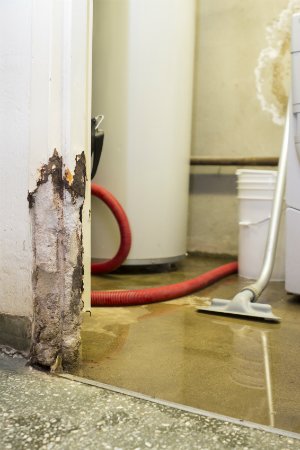
Shut off your power and gas supply. If there are gas lines or gas appliances in the basement, go outside first to shut off the supply from your meter’s gas main. If there’s a few inches of water, laying out a few 2×4s or turned-over five-gallon buckets may allow you to reach your breaker panel to kill the power. If you can’t safely reach your breaker, go back upstairs and call your power provider. They’ll help you determine the best next step for your specific situation, which may include sending a utilities worker to pull the meter face from the meter pan, disconnecting your house from the electrical grid.
Remove the water. Whether you rent a sump pump, go old-school with a bucket and mop, or use a wet/dry vac, it’s important to clear out the water quickly.
• If you know it’s not sewage backup and can pour the excess water down your storm drains, then do that.
• If you’re unsure, dump the water on your lawn or another permeable surface away from your home.
• If possible, use an upstairs outlet and run an extension cord for your sump pump or wet-vac, being extremely careful to keep the cord and plug away from the water. Never use an outlet that has been exposed to water.
• If it’s a clear day, open any windows to increase air circulation. High-powered fans and dehumidifiers can also speed up the drying phase.
Salvage what you can. Anything of value should be relocated to a dry spot where the damp items won’t damage floors or furnishings. If you have wooden baseboards, you might be able to save them; pull them out and put them aside to dry. Anything containing electrical wiring (including outlets exposed to the flooding) should be thrown away, according to the National Electrical Manufacturers Association.
Clear the floor. Now that you’re removed the pooled water, you can now pull up any carpets or rugs. Rubber backing will not be salvageable, and there’s a good chance your carpets and rugs may not be either. Put your floor coverings aside to dry, and come back to them later to assess their condition.
Check the drywall. Any drywall that has been soaked is drywall that likely needs replacing. Usually, wet drywall will crumble and its paper covering becomes a breeding ground for mold. If that’s the case, you can do a “flood cut” of the drywall 12 to 18 inches above the line of damage. That area from the floor to the cut will have to be re-drywalled, and any insulation exposed to water will have to be replaced.
Disinfect and throw away damaged things. If it’s clean water that flooded, you can consider skipping this step, but you’ll feel better if you’ve given everything a good cleaning, including the walls and exposed wood. Some products can prevent mold and mildew problems before they can take hold. When applied to the surface and left overnight, they’ll kill any spores that have already started to grow. Given the odds that mold could be a future problem, preventative treatment is a wise move. If the cause of your flooded basement isn’t obvious, and it’s a persistent problem, hiring an experienced pro to pinpoint the source is well worth it.
